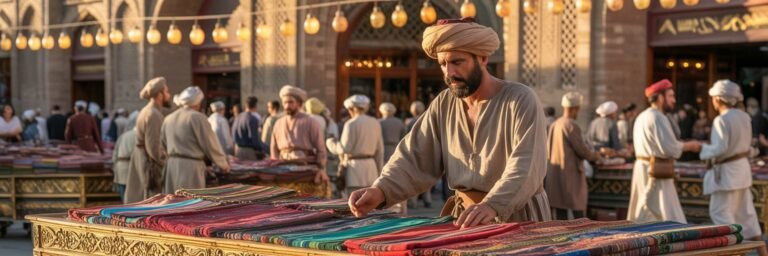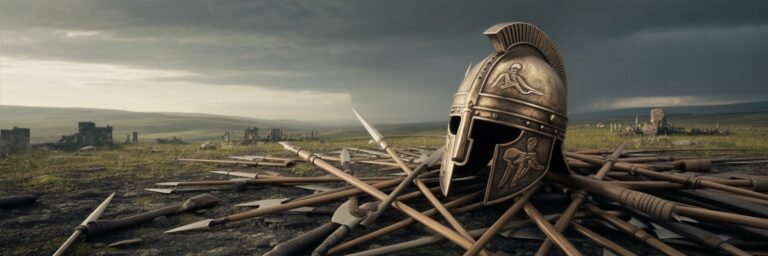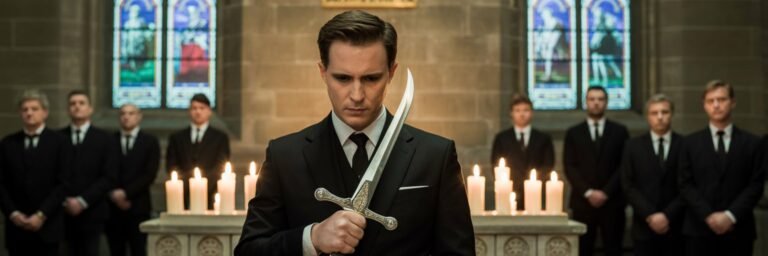INTRODUCTION
The Crusades, one of the most compelling periods in history, presented an amphitheater for a vast ensemble of heroes and villains. Truths were twisted, lines between virtue and vice blurred, and towering personalities emerged bearing both the mantle of saint and sinner. Today, we venture into the intricate tapestry of The Crusades, navigating through the narrative populated with extraordinary characters, controversies, and enigmatic situations.
HISTORICAL BACKGROUND
The Crusades, spanning from 11th to 15th centuries AD were a series of religious wars sanctioned by the Latin Church. The central aim: To reclaim the Holy Land, believed to be the birthplace of most Christian doctrines, from Islamic rule. There were nine major Crusades, each identified with unique leaders, heroes, and villains. In such a religiously charged, politically volatile climate, the Crusades birthed individuals who exemplified courage and piety, while painting others as embodiments of treachery and brutality.
THEORIES AND INTERPRETATIONS
The study of the Crusades has generally pivoted around contrasting perspectives. One school of thought, popularized by nineteenth-century historians such as Charles Mills, heralded the crusaders as valiant heroes of Christendom. However, the modern lens of historians like Jonathan Riley-Smith introduced a nuanced portrait closer to reality.
One intriguing figure, Godfrey of Bouillon, portrayed the ambivalence between villain and hero. According to Mills, Godfrey was an emblem of pious devotion and knightly valor. Yet, other historians submit that Godfrey’s heroism was stained by the massacre of thousands of Muslims in Jerusalem after its capture in 1099.
The story of Reynald of Châtillon is similarly complex. Seen by the Christian world as a fearless knight, Reynald was regarded by Muslims as a vicious pirate following a series of brutalities against civilians. Through Reynald’s narrative, we understand that each camp had its heroes and villains, often interchangeable based on one’s perspective.
MYSTERIES AND CONTROVERSIES
The saga of the Crusades is punctuated with intriguing mysteries and controversies. The notorious mass execution of Templar Knights in 1307 stands as an outstanding controversy. King Philip IV of France allegedly masterminded this purge for their wealth. Despite being considered villainous by some, many hold the Templars as martyrs and heroes unjustly persecuted for their affluence.
In another spectacle of ignominy and heroism, the infamous Children’s Crusade of 1212 resulted in the presumed deaths or enslavement of thousands of children. The radical preacher, Stephen of Cloyes, famously instigated it, earning him a contentious place in history.
SYMBOLISM AND CULTURAL SIGNIFICANCE
The heroes and villains of the Crusades have transcended beyond mere historical characters into symbols and cultural icons. Salahuddin Al-Ayubi (Saladin), perhaps the period’s most iconic figure, represented a paragon of chivalry, justice and tolerance. Saladin’s noble act of sparing the crusader defenders after the Battle of Hattin cemented his symbolic resonance as an enduring emblem of nobility, even in Western historiography.
Knights Templar have also endured as symbols of tragic heroism and allegations of dark villainy. They are often romanticized in contemporary culture, appearing in movies, books, and video games, simultaneously enthralling and controversial.
MODERN INVESTIGATIONS
In recent years, archaeology, ancient texts, and innovative historical approaches have further enriched our understanding of the Crusades. One prominent figure under recent scrutiny is Richard the Lionheart. Traditionally celebrated as a quintessential crusading hero, modern research shows a darker character steeped in pragmatism and ruthless ambition, thus challenging established narratives.
Also, the portrayal of the crusaders as an organized brigade under the Christian banner has been reassessed. Recent scholarship suggests that in some instances, crusaders operated as mercenaries for economic gain. This revisionist perspective adds a layer of complexity to the perception of crusaders as simple pawns in a religious war.
LEGACY AND CONCLUSION
The legacy of the Crusades’ heroes and villains has had profound cultural, political, and religious implications. Our modern perception of heroism and villainy is to an extent shaped by the tales of valor, sacrifice, treachery, and cruelty that emerged from this turbulent time in history. The space between the poles of hero and villain remains fertile ground for narratives that continue to captivate.
The Crusades are a testament to the complex nature of history, where a hero for some can be a villain for others, where truth is often in the eyes of the beholder, shaped by time and perspective. Unpacking the heroes and villains of the Crusades affords us a deeper understanding of the nature of human endeavor, ambition, conviction and frailty—a lesson that transcends the confines of time and remains relevant till today.
In dwelling upon the Crusades, we understand that history is not black and white, saint or sinner. Rather, it is a vibrant mosaic of personalities and perspectives, each bearing a unique interpretation of valor and villainy— a fascination that keeps us returning to the annals of history, an endless quest for knowledge and understanding.






